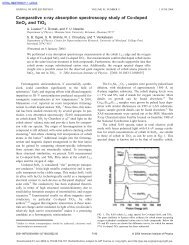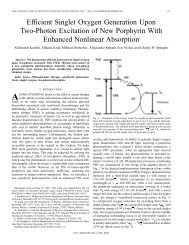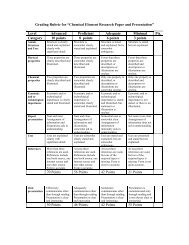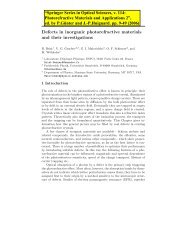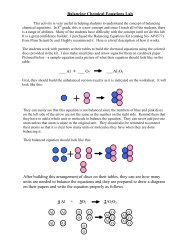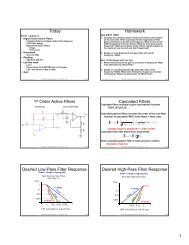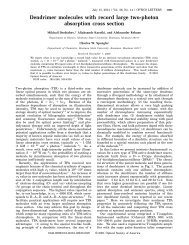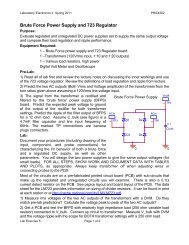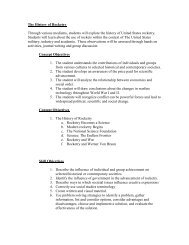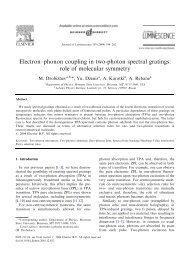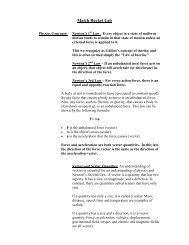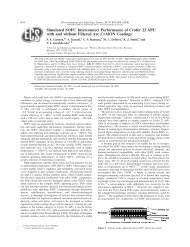Practical Uses and Applications of Electro-Optic Modulators
Practical Uses and Applications of Electro-Optic Modulators
Practical Uses and Applications of Electro-Optic Modulators
You also want an ePaper? Increase the reach of your titles
YUMPU automatically turns print PDFs into web optimized ePapers that Google loves.
A third limitation when using a phase modulator<br />
is residual amplitude modulation. An ideal<br />
phase modulator should not modulate the intensity <strong>of</strong><br />
an optical beam. Amplitude modulation will be<br />
induced by sources <strong>of</strong> back-reflection placed after the<br />
phase modulator. Back-reflections result in weak<br />
étalons which will alter the harmonic content <strong>of</strong> the<br />
modulated optical beam by introducing a measurable<br />
amplitude modulation component onto the beam.<br />
Unwanted amplitude modulation can be minimized by<br />
properly aligning the input polarization state to the<br />
principal axis <strong>of</strong> the modulator, which is vertical in the<br />
case <strong>of</strong> New Focus modulators. You can further reduce<br />
residual amplitude modulation by using a collimated<br />
optical beam positioned down the center <strong>of</strong> the modulator.<br />
To enable quick <strong>and</strong> easy alignment <strong>of</strong> its modulators,<br />
New Focus <strong>of</strong>fers the Model 4902 tilt aligner.<br />
Broadb<strong>and</strong> <strong>Modulators</strong><br />
New Focus <strong>of</strong>fers modulators designed to modulate<br />
either the amplitude or phase <strong>of</strong> linearly polarized<br />
light over a wide b<strong>and</strong>width, from DC to roughly<br />
100 MHz, with a relatively low drive voltage. The electrical<br />
input impedance <strong>of</strong> these devices in this frequency<br />
range is dominated by the capacitance <strong>of</strong> the electrooptic<br />
crystal. This capacitance ranges from 10 pF for<br />
the Model 4104 amplitude modulator to 30 pF for the<br />
Models 4002 <strong>and</strong> 4004 phase modulators. Signal generators<br />
<strong>and</strong> frequency synthesizers typically have 50-Ω<br />
output impedances, <strong>and</strong> are not optimized for driving<br />
capacitive loads. However, since 30 pF is a fairly small<br />
capacitance, most signal generators are adequate drivers<br />
at low frequencies (





